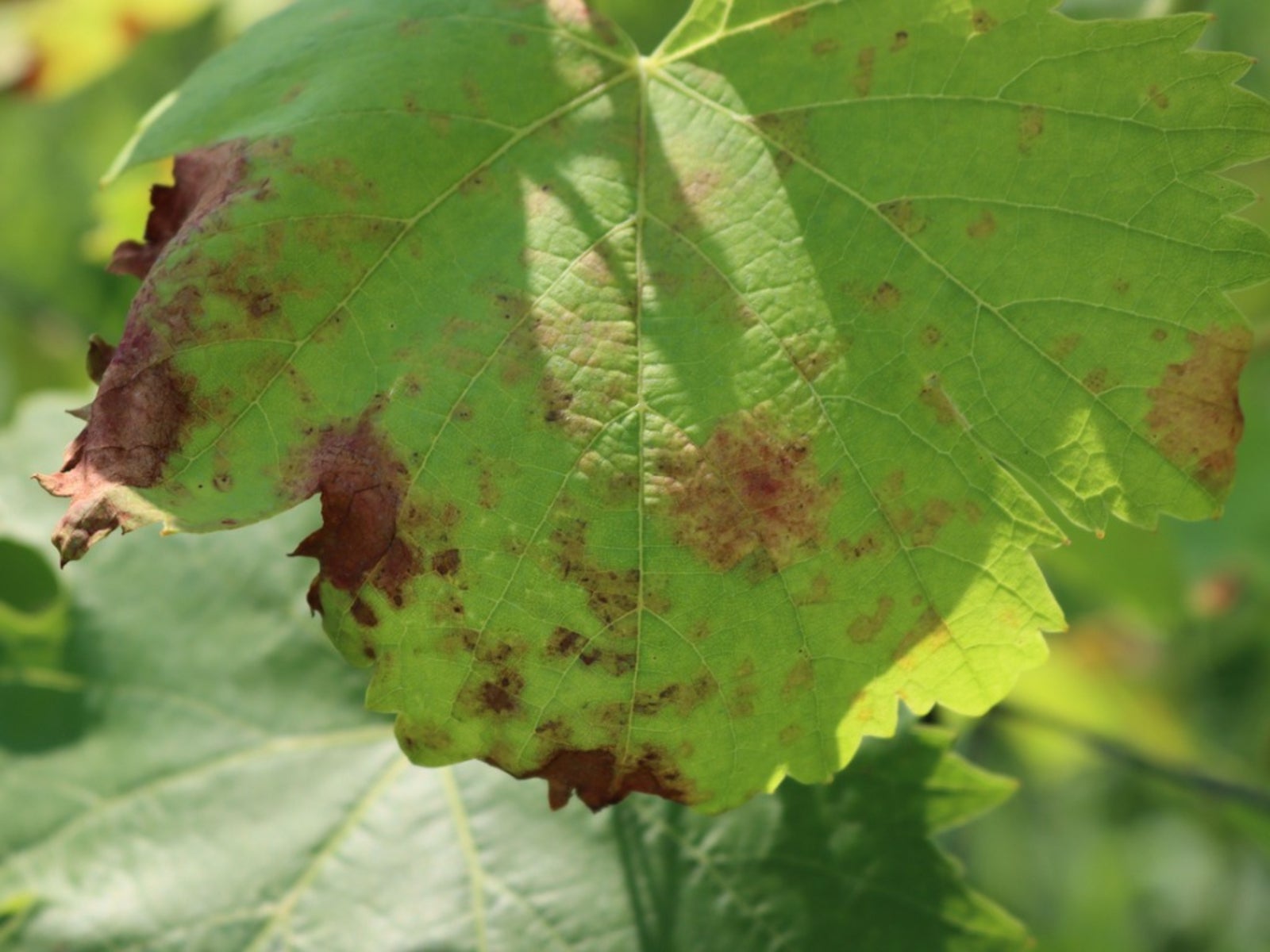Ozone Plant Damage: How To Fix Ozone Damage In Garden Plants


Ozone is an air pollutant that is essentially a very active form of oxygen. It forms when sunlight reacts with exhaust from internal combustion engines. Ozone damage to plants occurs when plant foliage absorbs ozone during transpiration, which is the plant's normal breathing process. The ozone reacts with compounds inside the plant to produce toxins that affect the plant in a variety of ways. The result is reduced yields and unsightly discolorations, such as silver spots on plants.
How to Fix Ozone Damage
Plants under stress are most likely to be seriously affected by ozone damage, and they recover slowly. Treat injured plants by providing conditions as close to the ideal for the species as possible. Irrigate well, especially on hot days, and fertilize on schedule. Keep the garden weed-free so that the plants don't have competition for moisture and nutrients. Treating ozone injured plants won't correct the damage that is already done, but it can help the plant produce new, healthy foliage and help prevent diseases and insects that normally attack weak and injured plants.
Ozone Plant Damage
There are a number of symptoms associated with ozone plant damage. Ozone first damages foliage that is almost mature. As it progresses, older and younger leaves may also sustain damage. The first symptoms are stippling or tiny spots on the surface of the leaves that may be light tan, yellow, red, red-brown, dark brown, black, or purple in color. Over time, the spots grow together to form large dead areas. Here are some additional symptoms you may see in plants with ozone damage:
- You may see bleached out or silver spots on plants.
- Leaves may turn yellow, bronze, or red, inhibiting their ability to perform photosynthesis.
- Citrus and grape leaves may wither and drop off.
- Conifers may show yellow-brown mottling and tip burn. White pines are often stunted and yellow.
These symptoms closely mimic those of a variety of plant diseases. Your local cooperative extension agent can help you determine whether the symptoms are caused by ozone damage or disease. Depending on the extent of the damage, plants may have reduced yields. Fruits and vegetables may be small because they mature too early. The plants will likely outgrow the damage if the symptoms are light.
Gardening tips, videos, info and more delivered right to your inbox!
Sign up for the Gardening Know How newsletter today and receive a free copy of our e-book "How to Grow Delicious Tomatoes".

Jackie Carroll has written over 500 articles for Gardening Know How on a wide range of topics.
-
 Moody Blooms For Spring: 8 Types Of Black Flowers To Add Drama To Spring Displays
Moody Blooms For Spring: 8 Types Of Black Flowers To Add Drama To Spring DisplaysFrom midnight burgundies to inky violets, several types of black flowers can enrich and embolden a spring display. Try these brooding bloomers for a moody garden
By Tonya Barnett
-
 My Homemade Orchid Fertilizer Always Brings More Blooms – Here's The Easy Recipe That Transforms Plants
My Homemade Orchid Fertilizer Always Brings More Blooms – Here's The Easy Recipe That Transforms PlantsScientist-turned-gardener Mary Ellen Ellis shares her tried-and-tested DIY orchid fertilizer recipe, plus more ingredients to try for healthy, happy plants.
By Mary Ellen Ellis